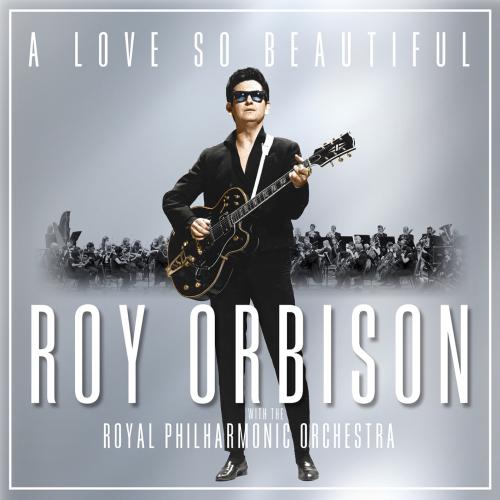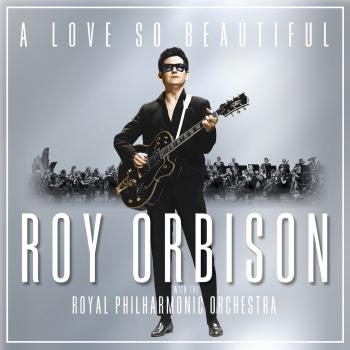
A Love So Beautiful: Roy Orbison & The Royal Philharmonic Orchestra Roy Orbison
Album Info
Album Veröffentlichung:
2017
HRA-Veröffentlichung:
03.11.2017
Das Album enthält Albumcover
Entschuldigen Sie bitte!
Sehr geehrter HIGHRESAUDIO Besucher,
leider kann das Album zurzeit aufgrund von Länder- und Lizenzbeschränkungen nicht gekauft werden oder uns liegt der offizielle Veröffentlichungstermin für Ihr Land noch nicht vor. Wir aktualisieren unsere Veröffentlichungstermine ein- bis zweimal die Woche. Bitte schauen Sie ab und zu mal wieder rein.
Wir empfehlen Ihnen das Album auf Ihre Merkliste zu setzen.
Wir bedanken uns für Ihr Verständnis und Ihre Geduld.
Ihr, HIGHRESAUDIO
- 1 In Dreams 03:46
- 2 Crying 02:58
- 3 I'm Hurtin' 02:46
- 4 Oh, Pretty Woman 03:07
- 5 It's Over 03:18
- 6 Dream Baby 02:53
- 7 Blue Angel 02:57
- 8 Love Hurts 02:39
- 9 Uptown 02:25
- 10 Mean Woman Blues 02:26
- 11 Only the Lonely (Know the Way I Feel) 02:30
- 12 Running Scared 02:47
- 13 I Drove All Night 04:13
- 14 You Got It 03:34
- 15 A Love So Beautiful 04:11
- 16 Pretty Paper 03:22
- 17 I Drove All Night 04:02
Info zu A Love So Beautiful: Roy Orbison & The Royal Philharmonic Orchestra
This brand new Roy Orbison album infuses Orbison’s best original vocal performances, consisting of hits and fan favourites such as “Oh, Pretty Woman,” “Crying” and “Only the Lonely,” with the emotion and world class musicianship of the Royal Philharmonic, London’s most notable orchestra, plus additional instrumentation by Roy’s sons and grandson.
'A Love So Beautiful' features the timeless Roy tracks "Oh, Pretty Woman", "You Got It", "Crying" and more while breathing new life into fan favorites such as "Drove All Night" and the title track "A Love So Beautiful" making for a beautiful exploration into the mastery of Roy's vocals.
Additionally, the album will feature instrumental backing from "Roy's boys": his three sons Wesley, Roy Jr. and Alex; plus Roy's grandson Roy Orbison III. The spiritual collaboration between three generations of Orbisons makes A Love So Beautiful a truly special experience, not just for fans, but for Roy's sons as well. Having never had the opportunity to record with their father in his lifetime, this collaboration makes for an emotional homecoming for Wesley, Roy Jr., Alex and Roy III.
When made aware of the new recording of his "Pretty Paper," Willie Nelson commented, "Back in 1963, right after I wrote it, I brought the song to Fred Foster the head of Monument Records, the label I was with at the time. He really liked it and said 'It's perfect for Roy Orbison.' I was more than ok with that idea since I had wanted my tunes to be covered by big stars and Roy was certainly that. Fred told me he was going to play the song over the phone for Roy who was in London at the time and that's exactly what happened. I was glad that he liked 'Pretty Paper' enough to record it over there. It's kind of amazing that the same song by the same great artist, recorded again in London 54 years later, is now having a second life."
Nelson was inspired to write "Pretty Paper," when he remembered seeing a man with no legs selling paper and pencils in front of Leonard's Department Store in Fort Worth. The man, later identified by the Fort Worth Star-Telegram as Frankie Brierton of Santo, TX, was hawking his offerings to passersby, calling out "Pretty paper!," referring to holiday wrapping paper. Like all the orchestral backing for the current project, Orbison's original vocal, as noted by Willie, was recorded in London. Ever the trouper, Orbison, suffering from a 102 degree fever at the time, entered Pye Studios there and put down the vocal track for the original record that would be released in November of 1963, a mere month after Nelson had written the song. It became a holiday classic and reached #15 on the Billboard Hot 100 and #10 on the Adult Contemporary chart. Nelson recorded his own version the following year.
The material covered on A Love So Beautiful is vast, ranging from the Sun Records era of Roy's career as a rockabilly musician in the 1950s ("Ooby Dooby"), through his early-mid 60s material on the Monument label where he hit his first commercial peak ("In Dreams," "Blue Angel," "Crying," "Dream Baby," "I'm Hurtin'," "It's Over," "Mean Woman Blues," "Only the Lonely," "Oh, Pretty Woman," "Love Hurts," "Uptown") up to his comeback in the late 80s before his untimely passing ("You Got It," "I Drove All Night," "A Love So Beautiful").
Roy Orbison, vocals, guitar
Alex Orbison, drums
Wesley Orbison, guitar
Roy Orbison Jr., guitar
Roy Orbison III, guitar, tambourine
The Royal Philharmonic Orchestra
Roy Kelton Orbison
was born on April 23, 1936 at 3:30 pm, in Vernon, Texas. Nadine, his mother, was a nurse. Orbie Lee, his father, a worker. Roy was their second child. For his sixth birthday, Roy asked for a harmonica, but fortunately his daddy gave him a guitar. Orbie Lee is generally credited with teaching Roy to play guitar. However, he also learned from Charlie Orbison, Orbie Lee's brother, and Kenneth Schultz, brother of Nadine's. Together with Clois Russell, Orbie Lee's neighbor and workmate, they would often play and sing. The first song Roy ever played was the classic "You Are My Sunshine". He learned very quickly, so that way he could stay up late with the grown-ups and sing.
The Orbison family moved to Forth Worth sometime in 1942. In Forth Worth, they found employment in the munitions and aircraft factories that had been expanded due to America's entry into World War II. But due to epidemic polio in 1944, Roy and his elder brother Grady were sent back to live with their maternal grandmother, a divorcee, in Vernon. Roy Orbison wrote his first song "A Vow of Love", in front of his grandmother's house the same year. In 1945 he entered and won a contest on KVWC in Vernon and this led to his own radio show singing the same songs every Saturday. In 1946 a medicine show came to town and Roy entered the talent contest singing "Mountain Dew" and "Jole Blon", and tied for first place with a 15-year-old kid. The total prize was $15, so he got $7.50 and gave his buddy half of that for carrying his guitar.
When the War was over, the family re-united in Vernon and soon moved out west to Wink, Texas, in late 1946. He formed his first band when he was thirteen, in 1949. They called themselves The Wink Westerners.
In 1951 Roy had been appearing regularly on KERB radio in Kermit. By 1953 the band, got their own show on KERB sponsored by local businessmen one day a week before school. The Wink Westerner's first appearance was at one of the school assemblies. They were also featured on the KERB Jamboree on Saturday afternoons with local Country & Western bands. The first songs they played were "Kaw-liga", "Mexican Joe", "Caribbean", and "Under the Double Eagle". But they were not only country, little by little they began playing and making string arrangements for Big-Band standards and instrumentals like "In The Mood" or "Little Brown Jug" as well as Pop standards. During the summer, Orbison would work for the County shoving tar, or work in the oil fields chopping steel or painting water towers. He used to be part of the marching band and singing octet, and at some point or another tried to play the baritone horn. He even had become the manager of Wink High school's Kittens football team in 1952.
At one of the band's gigs in McCamey's Lions Club, somebody offered them to play a dance and pay them for it. The pay for that gig was as good as a hard working week's pay, so they agreed to do it even though they only knew 4 or 5 songs. They learned some more tunes in a rush practicing at the Community Center, and started getting paid for what they liked doing. They were invited to tour West Texas with R. A. Lipscomb who was running for the office of district governor of the Lions Club in 1953. They attended the 36th International Lions Club Convention in Chicago from July 3rd to July 11th of that year... Together with Mr. Lipscomb, they all stayed at the Conrad Hilton Hotel and the Wink Westerners performed in the front lobby. Roy graduated from Wink High in June 1954 and signed up to attend the fall seminar at the North Texas State College in Denton, returned home for Christmas and played the New Year Dance on December 31st 1954 with the Wink Westerners.
Wade Lee Moore and Dick Penner where two college friends of Roy's at Denton and they had written "The Ooby Dooby". Dick Penner arranged for them to record his song at Jim Beck's studio in the outskirts of Dallas, Texas, which is South-East of Denton. Beck had been instrumental in the discovery of Lefty Frizzell and Marty Robbins for Columbia Records, so the band headed for Dallas to record "Ooby Dooby" and "Hey, Miss Fannie" which appears to be a duet of Roy Orbison and James Morrow. The session took place at some point during the summer of 1955 before the boys returned to West Texas. Roy was convinced that they would be signed to Columbia Records, which never happened. … Visit: www.royorbison.com
Dieses Album enthält kein Booklet















